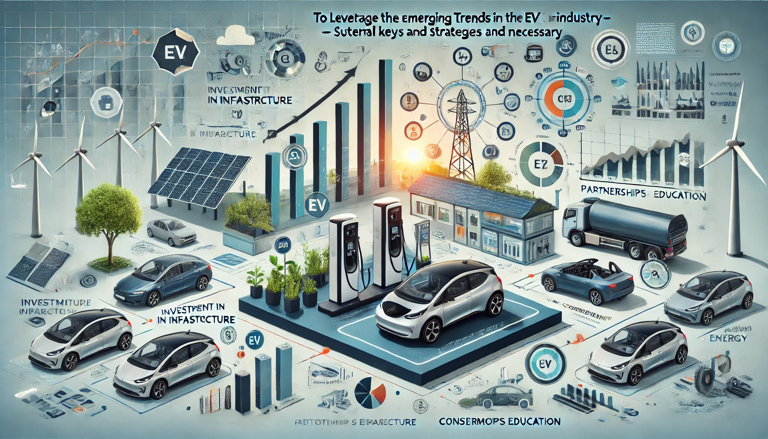To leverage the emerging trends in the EV charging industry, several key actions and strategies are necessary:
1. Invest in Advanced Technologies
Vehicle-to-Grid (V2G) Technology:
Investing in V2G technology not only allows companies and EV owners to participate in energy markets and provide grid services but also opens up a new avenue for revenue generation from stored energy. Businesses should explore partnerships with energy companies to facilitate this integration, fostering a sense of optimism about the financial prospects.
Renewable Energy Integration:
Setting up EV charging stations powered by renewable energy sources such as solar or wind can attract environmentally conscious customers and reduce operational costs in the long run.

2. Expand and Enhance Charging Infrastructure
Fast-Charging Stations:
To meet the growing demand from new EV owners, focus on deploying fast-charging stations in strategic locations, including urban centers, highways, and rural areas.
Rural Expansion:
Investing in rural charging infrastructure can tap into an underserved market, increasing EV adoption and customer base in less densely populated areas.
3. Adopt and Promote Charging as a Service (CaaS)
CaaS Model:
For businesses that want to avoid handling the complexities of EV charging infrastructure, partnering with CaaS providers can be a cost-effective solution. This model allows businesses to offer EV charging without significant upfront investment or ongoing maintenance.
4. Foster Interoperability and User Convenience
eRoaming:
Implement eRoaming capabilities to ensure customers can use various charging networks seamlessly. This improves the user experience and expands the potential customer base by offering broader accessibility.
User-Centric Solutions:
Develop and integrate intelligent charging solutions that offer multiple payment options, reservation capabilities, and user-friendly interfaces. This includes mobile payments, RFID, and automatic payment systems built into the EVs themselves.
5. Engage in Strategic Partnerships and Acquisitions
Collaborate with Industry Leaders:
Form alliances with automotive OEMs, energy companies, and other stakeholders to expand charging networks and improve service reliability. Examples include GM’s partnership with EVgo and Shell’s acquisition of Ubitricity, which have significantly expanded their EV charging capabilities and market reach.
Mergers and Acquisitions:
Consider strategic mergers or acquisitions to scale operations and leverage existing infrastructure quickly. This can be particularly effective for entering new markets or enhancing technological capabilities.
6. Focus on Customer Engagement and Marketing
Branding and Loyalty Programs:
Use EV charging stations as a marketing tool to attract high-income customers, offering discounts and loyalty points to those who spend money while charging. This approach can significantly enhance brand loyalty and customer retention, fostering a sense of optimism about customer relations.
Educational Campaigns:
Educate potential customers about the benefits of EVs and the convenience of charging at your stations. Providing clear information on the environmental and economic benefits can drive higher adoption rates.
7. Secure Funding and Support
Government Incentives:
Leverage federal and state incentives for EV infrastructure development. This can include grants, tax credits, and subsidies aimed at promoting EV adoption and infrastructure growth.
Private Investment:
Seek investments from venture capitalists, private equity, and other financial institutions interested in sustainable and green technologies. Demonstrating the long-term profitability and environmental impact of EV charging can attract significant funding.
By implementing these strategies, businesses, and stakeholders can effectively capitalize on the growing EV charging market and contribute to a sustainable transportation future.
